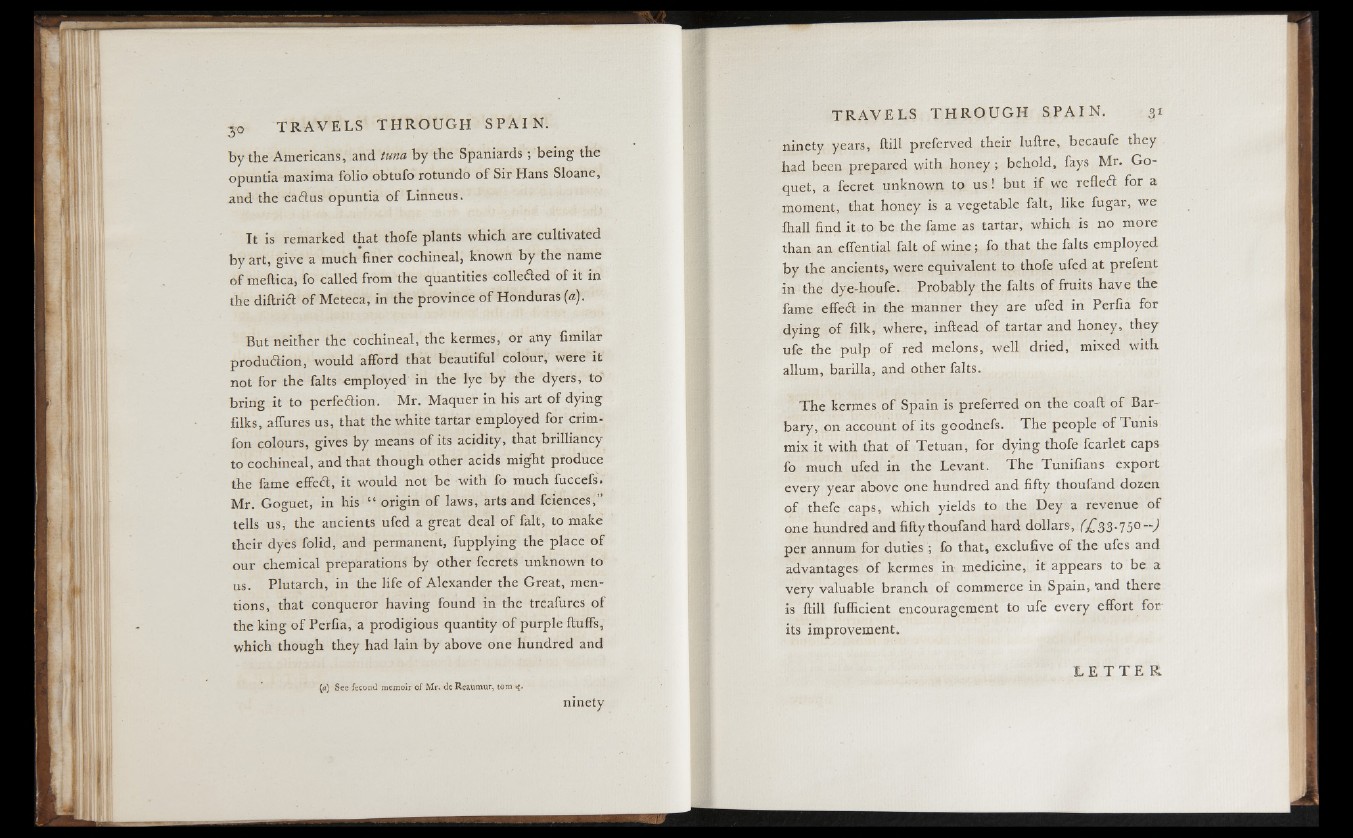
by the Americans, and tuna by the Spaniards; being the
opuntia maxima folio obtufo rotundo of Sir Hans Sloane,
and the caClus opuntia of Linneus.
It is remarked that thofe plants which are cultivated
by art, give a much finer cochineal, knowrt by the name
of meftica, fo called from the quantities collected of it in
the diltrid o f Meteca, in the province of Honduras (a).
But neither the cochineal, the kermes, or any fimilar
produdion, would afford that beautiful colour, were it
not for the falts employed in the lye by the dyers, to
bring it to perfection. Mr. Maquer in his art of dying
filks, affures us, that the white tartar employed for crim-
fon colours, gives by means of its acidity, that brilliancy
to cochineal, and that though other acids might produce
the fame effeCt, it would not be with fo much fuccefs.
Mr. Goguet, in his “ origin o f laws, arts and fciences,”
tells us, the ancients ufed a great deal o f fait, to make
their dyes folid, and permanent, fupplying the place of
our chemical preparations by other fecrets unknown to
us. Plutarch, in the life o f Alexander the Great, mentions,
that conqueror having found in the treafures of
the king of Perlia, a prodigious quantity of purple fluffs,
which though they had lain by above one hundred and
(tj) See fecond memoir of Mr. de Reaumur, tom
ninety
ninety years, flill preferved their luitre, becaufe they
had been prepared with honey ; behold, fays Mr. Go-
quet, a fecret unknown to us ! but if we refleCl for a
moment, that honey is a vegetable fait, like fugar, we
fhall find it to be the fame as tartar, which is no more
than an effential fait of wine; fo that the falts employed
by the ancients, were equivalent to thofe ufed at prefent
in the dye-houfe. Probably the falts o f fruits have the
fame effeCl in the manner they are ufed in Perfia for
dying of filk, where, inflead o f tartar and honey, they
ufe. the pulp of red melons, well dried, mixed with
allum, barilla, and other falts.
The kermes of Spain is preferred on the coaft of Bar-
bary, on account of its goodnefs. The people of Tunis
mix it with that o f Tetuan, for dying thofe fcarlet caps
fo much ufed in the Levant. The Tunifians export
every year above one hundred and fifty thoufand dozen
of thefe caps, which yields to the Dey a revenue o f
one hundred and fifty thoufand hard dollars, ( ¿ 33'lb°~~)
per annum for duties ; fo that, exclufive of the ufes and
advantages o f kermes in medicine, it appears to be a
very valuable branch of commerce in Spain, and there
is ftill fufficient encouragement to ufe every effort for.
its improvement.